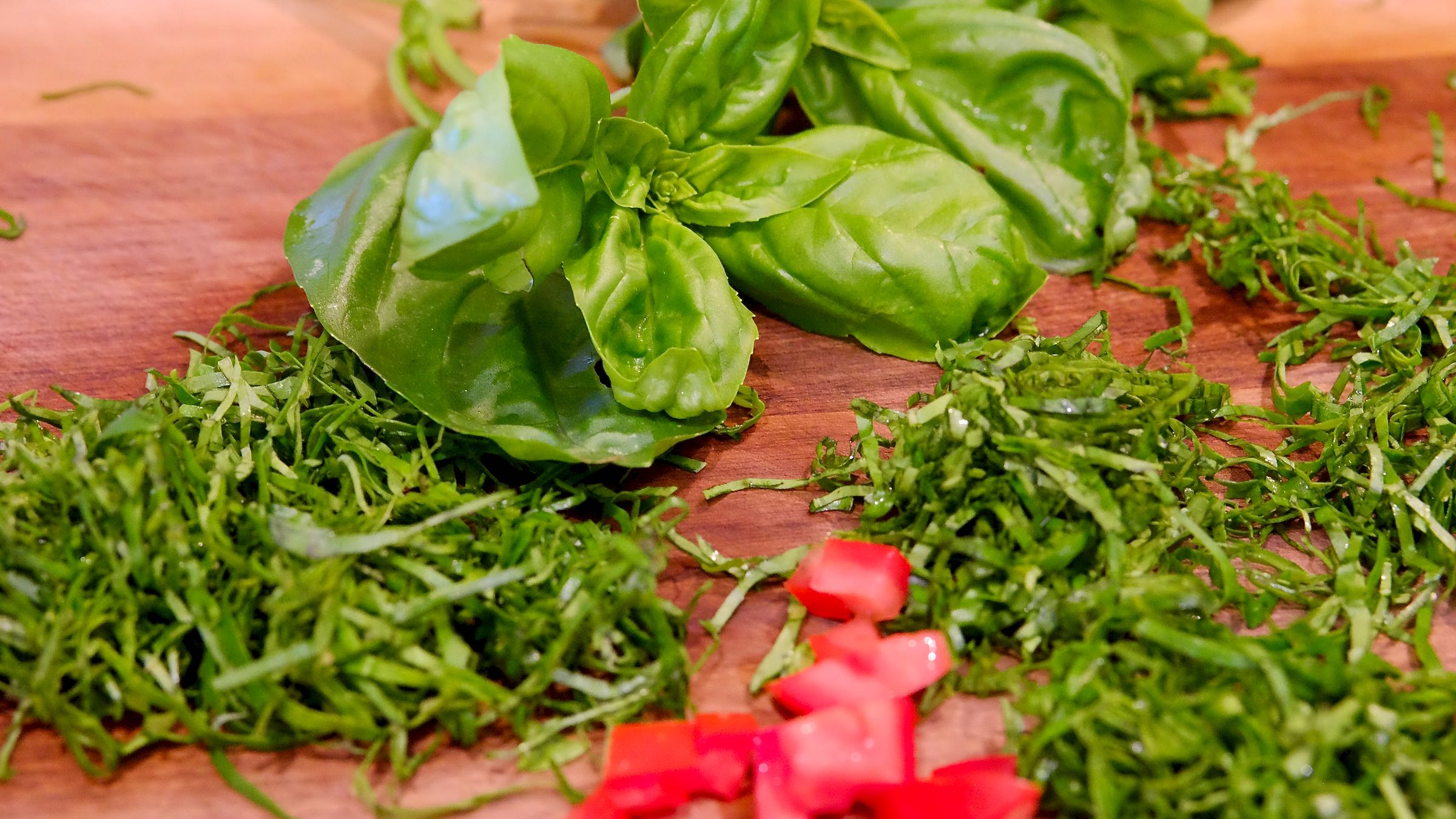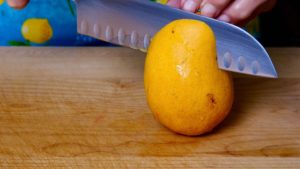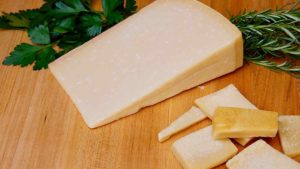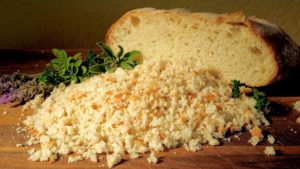Mastering the art of chiffonade opens up a world of culinary possibilities, whether using basil, sage or any other leafy green. Chiffonade is a French technique for cutting leafy greens into elegant, fine shreds or ribbons. With our easy to follow step by step guide you will be able to elevate your cooking skills.
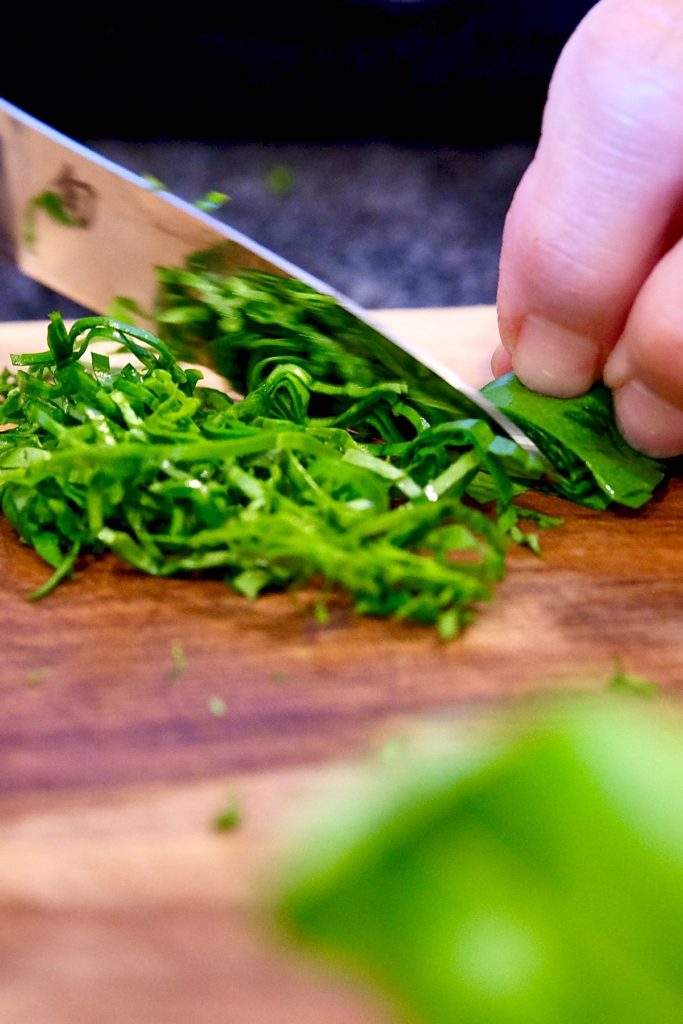
It’s important to note that the chiffonade technique isn’t limited to basil alone. You can apply the same method to other large leaf herbs like sage, mint, or even spinach. Simply follow the same steps, adjusting the rolling and slicing as needed to accommodate the size and shape of the leaves.
While this technique may seem daunting at first, following these easy steps will help you master this cutting technique with confidence. Remember, speed isn’t crucial here. Take your time and focus on making clean, precise cuts – as the saying goes, slow and steady wins the race.
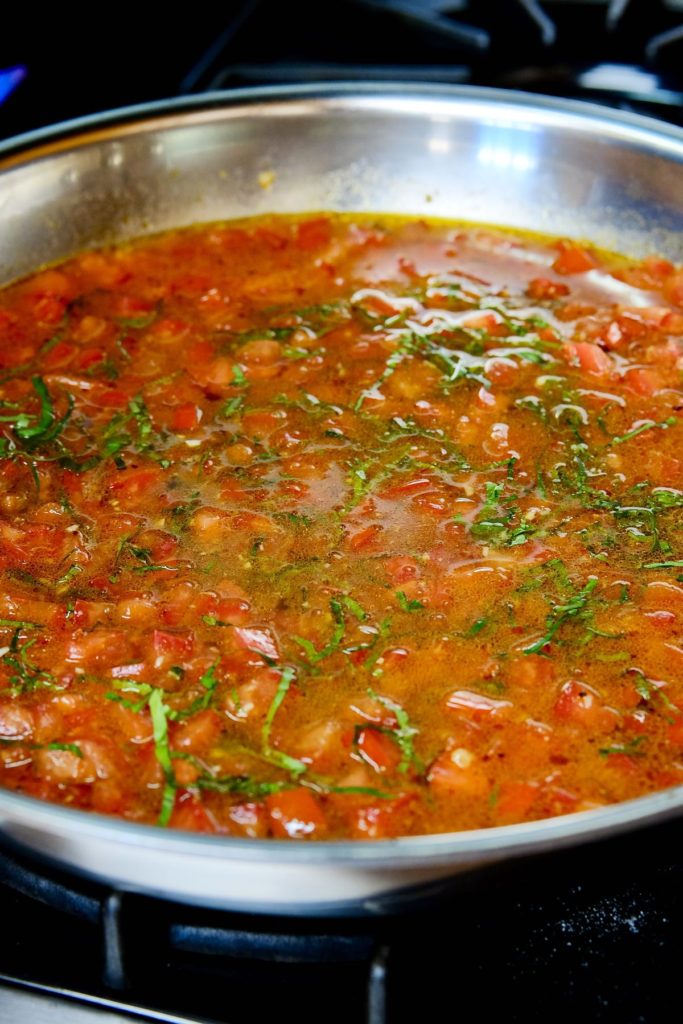
Use basil chiffonade for adding delicate flavor to sauces like this Easy Fresh Tomato Sauce.
Tools for Mastering Chiffonade
In order to achieve perfect chiffonade, only two tools are required : a sharp knife and a clean cutting board. When it comes to making clean thin cuts for chiffonade, the knife is the most crucial tool. Opt for a sharp, comfortable knife that fits well in your hand. While you may have different knives for various tasks, consider investing in a dedicated paring knife for chiffonade. Ensure it’s kept sharp and protected to maintain its effectiveness.
I maintain a number of different knives for different tasks. For instance, I have my older paring knives which are used for daily tasks like cutting avocados, apples and other fruits. But when preparing to make specialized cuts like basil chiffonade, I reach for my special paring knife. It’s kept in a sheath tucked away in a drawer. This is done for two reasons, it is a magnificently sharp knife and I want to maintain its edge. After use, it is washed off and dried immediately. Knives have two enemies…water and improper use. Don’t leave your knives with water on them or soaking. And certainly don’t use your knife as a screw driver.
Tips on choosing a good knife
Whether you’re purchasing a knife from a cooking store or online, it’s crucial to handle the knife before making your decision. Take note of how the knife feels in your hand and select one with a handle that provides comfort and balance. A well-balanced knife should feel neither too heavy nor awkwardly weighted when held, and the handle should be ergonomically suited to your hand size.
When referring to balance, a good knife should not feel like it is falling forward when gripped. And for comfort, a knife should fit the palm of your hand. Find a knife that feels comfortable to your grip.
I truly love the way this knife feels in my hand. It’s comfortable and easy to control. The best advice I can give you is to find a knife that feels balanced to you and it will serve you well.

A Cutting Board
The second most important tool needed in your kitchen is a good wood cutting board. Plastic cutting mats have their place, as they don’t absorb odors. However, there is nothing like a good wood board. Furthermore if a wood board is cleaned and properly maintained, it can be kept odor free. Additionally, wood boards are kinder to the edge of your knife. When shopping for a wood cutting board look for those that are made from fine-grained woods like maple and walnut.

Before beginning, rinse basil leaves and pat them dry with a paper towel. Set aside the tiny baby leaves from the center for garnish.
Simple steps to Basil Chiffonade
- Stack 8-10 basil leaves on top of each other facing the same direction.
- Begin at the side closest to you and roll the basil leaves (away from you) towards the other long side.
- Continue to roll the leaves creating a long cigar. (This can be tricky at first. If this is too difficult try with a smaller stack of leaves.)
- Start the first cut at the tip of the cigar, trimming away the pointed edge.
- Continue to make evenly spaced, thin cuts through the width of the roll.
- With each cut made, walk your fingers backward on the roll.
- When you near the end of the roll, it will become more difficult to hold the leaves in place. At this point, discard the end scraps or save them for garnishing. Being frugal, isn’t worth the risk of cutting fingertips.
- Continue with steps 1 through 5 until you have enough chiffonade to complete your recipe.
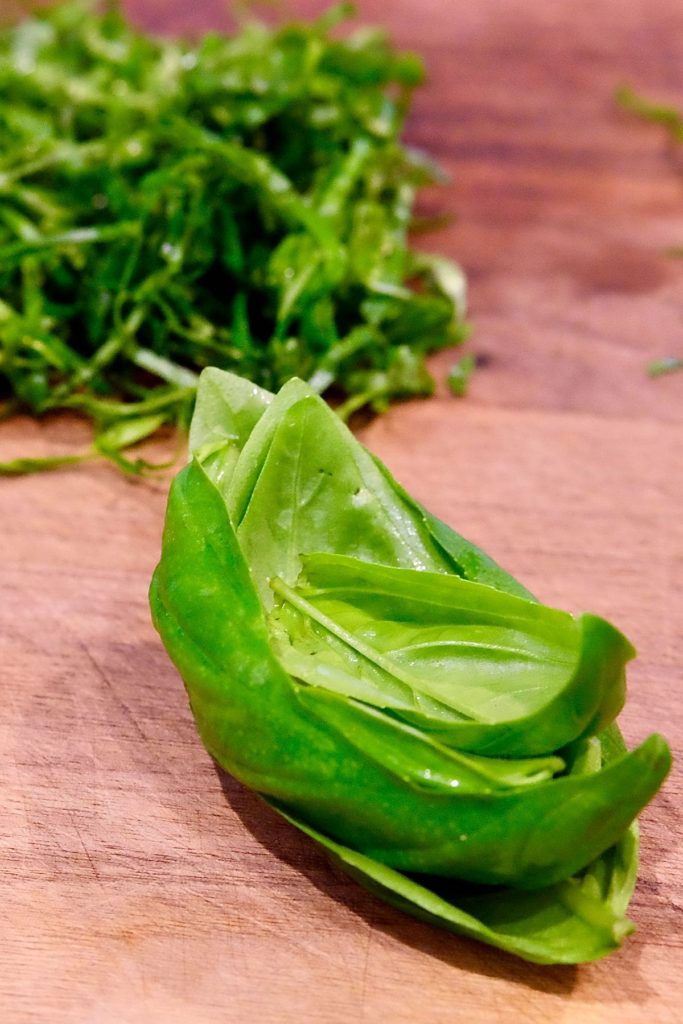
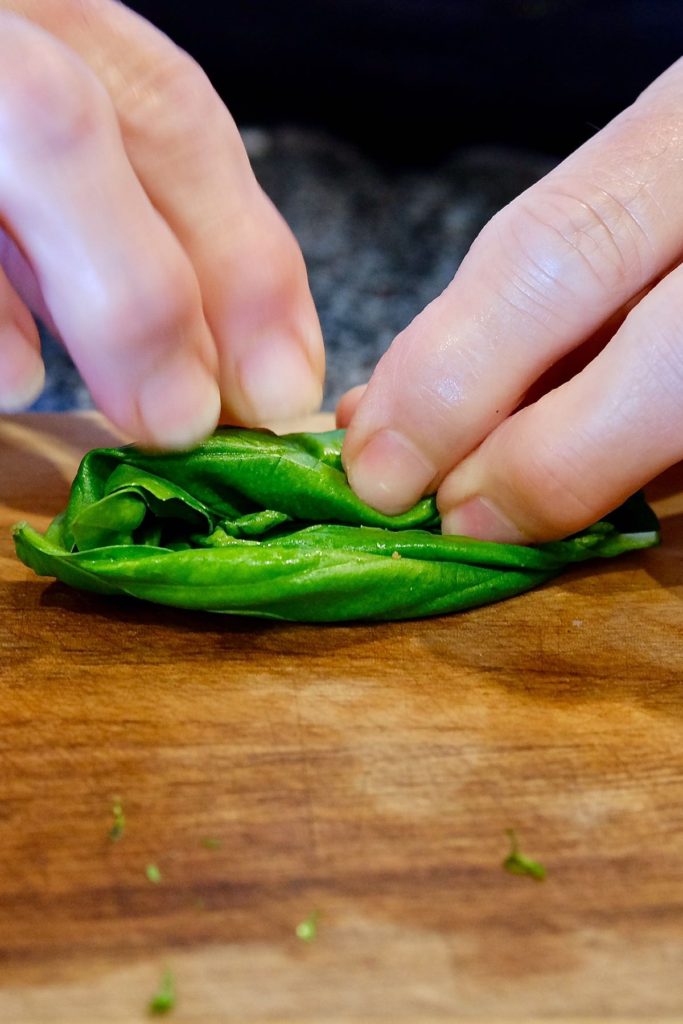
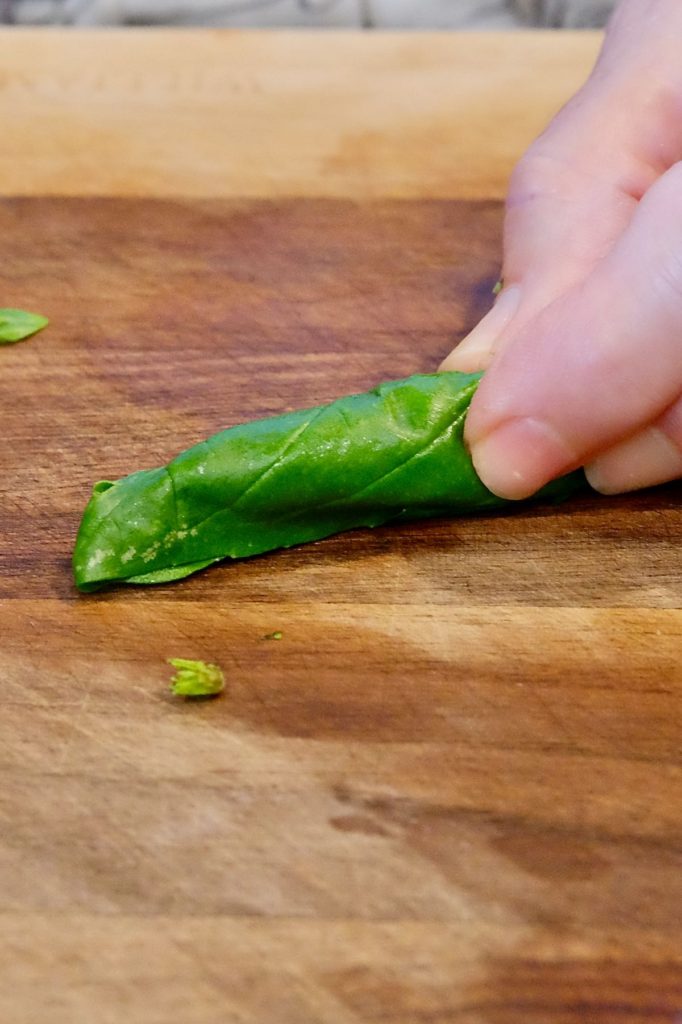
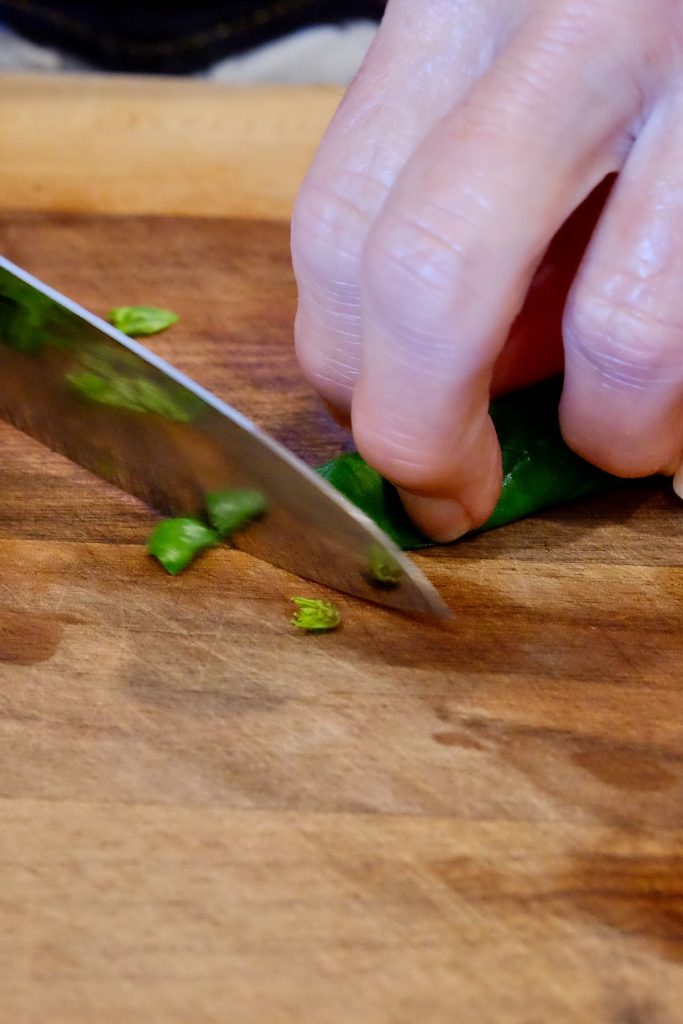
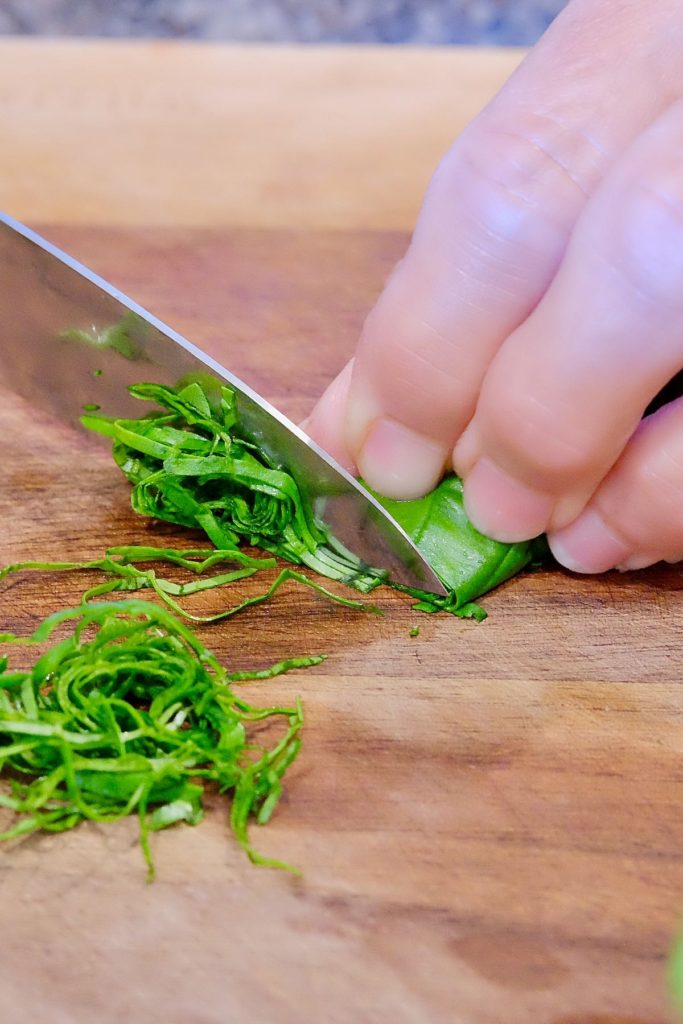
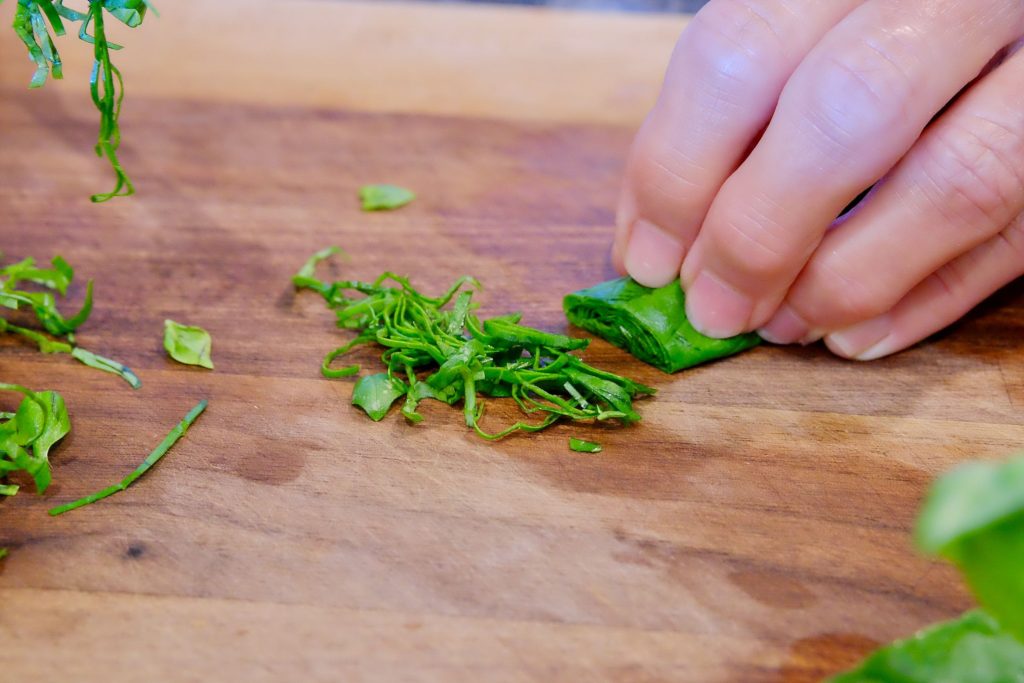
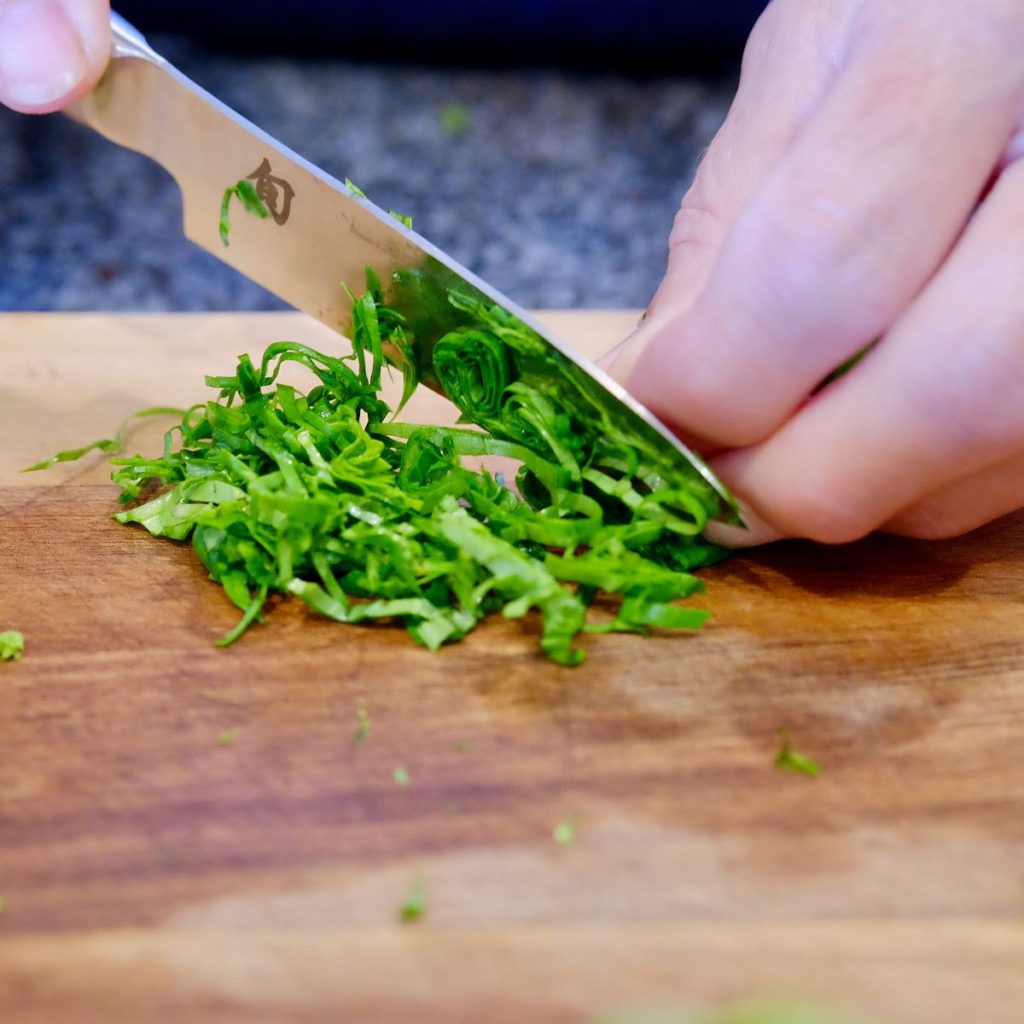
Before you know it you will have mastered this technique, creating beautiful ribbons for cooking and garnishing your recipes. Whether you’re garnishing pasta, topping pizza, or adding a burst of herbal goodness to salads, knowing how to chiffonade will elevate your cooking.
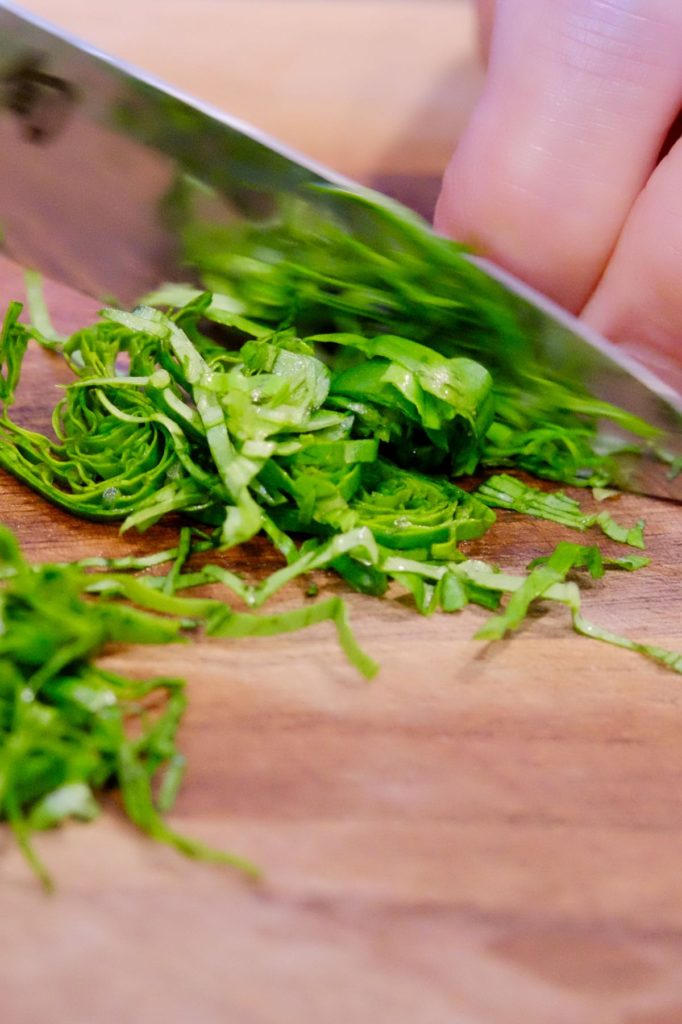
Or use chiffonade to garnish and finish dishes with an extra boost of flavor. Basil Chiffonade brings delicate seasoning to Linguine alla Caprese.
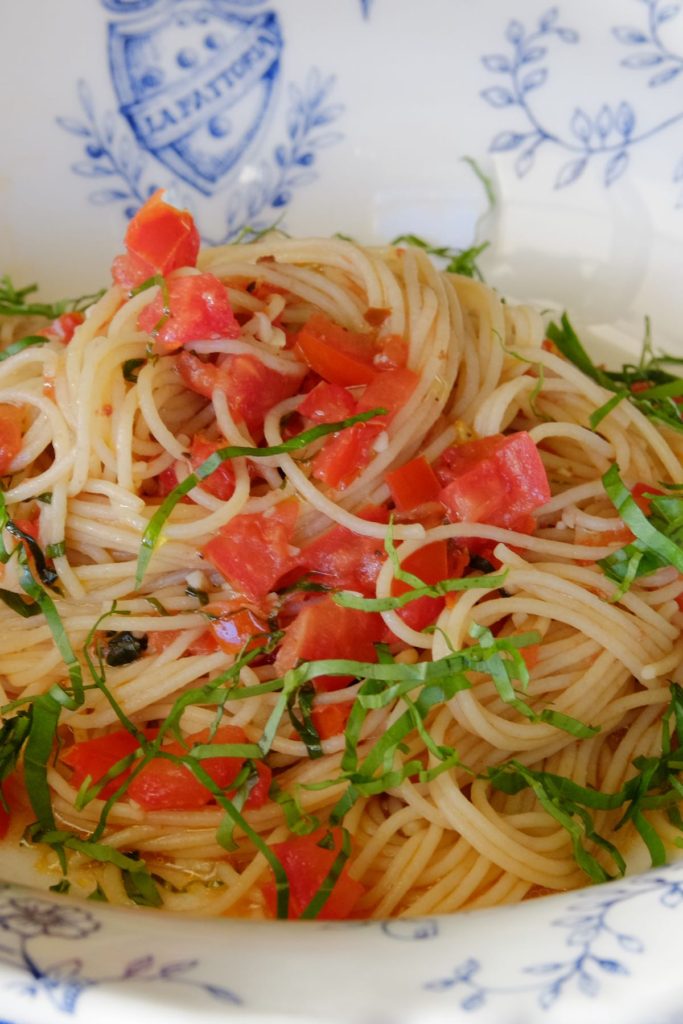
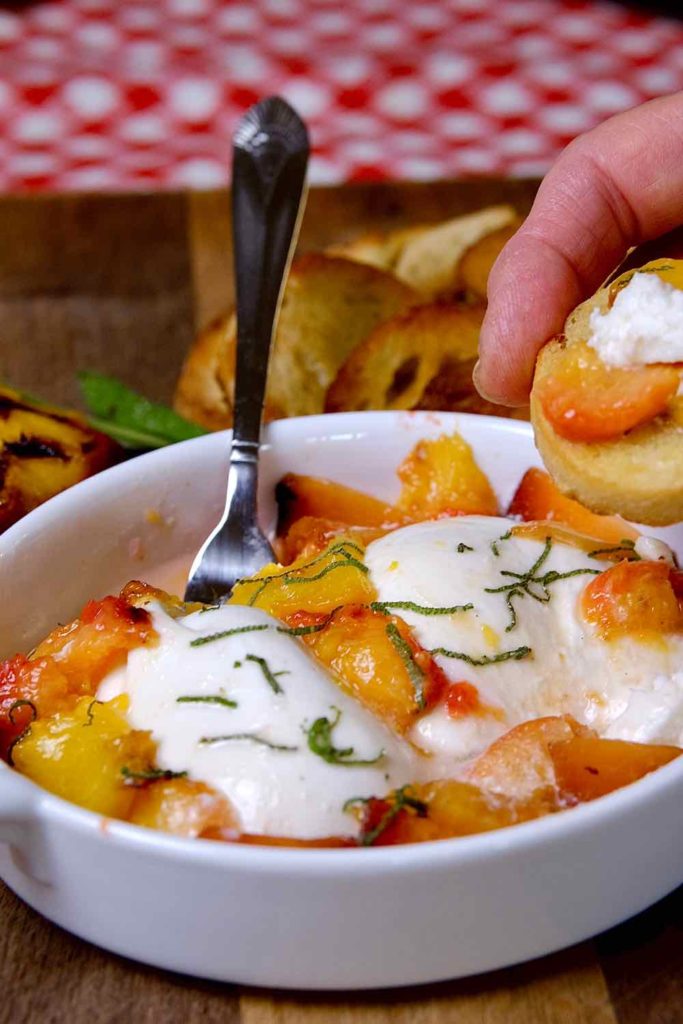
Buon Appetito!

